
Thomas Gainsborough was an English portrait and landscape painter, draughtsman, and printmaker. Along with his rival Sir Joshua Reynolds, he is considered one of the most important British artists of the second half of the 18th century. He painted quickly, and the works of his maturity are characterised by a light palette and easy strokes. Despite being a prolific portrait painter, Gainsborough gained greater satisfaction from his landscapes. He is credited as the originator of the 18th-century British landscape school. Gainsborough was a founding member of the Royal Academy.

Sir John Everett Millais, 1st Baronet was an English painter and illustrator who was one of the founders of the Pre-Raphaelite Brotherhood. He was a child prodigy who, aged eleven, became the youngest student to enter the Royal Academy Schools. The Pre-Raphaelite Brotherhood was founded at his family home in London, at 83 Gower Street. Millais became the most famous exponent of the style, his painting Christ in the House of His Parents (1849–50) generating considerable controversy, and he produced a picture that could serve as the embodiment of the historical and naturalist focus of the group, Ophelia, in 1851–52.

John Constable was an English landscape painter in the Romantic tradition. Born in Suffolk, he is known principally for revolutionising the genre of landscape painting with his pictures of Dedham Vale, the area surrounding his home – now known as "Constable Country" – which he invested with an intensity of affection. "I should paint my own places best", he wrote to his friend John Fisher in 1821, "painting is but another word for feeling".
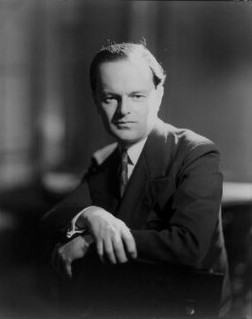
Kenneth Mackenzie Clark, Baron Clark was a British art historian, museum director and broadcaster. His expertise covered a wide range of artists and periods, but he is particularly associated with Italian Renaissance art, most of all that of Leonardo da Vinci. After running two art galleries in the 1930s and 1940s, he came to wider public notice on television, presenting a succession of programmes on the arts from the 1950s to the 1970s, the largest and best known being the Civilisation series in 1969.

Bridget Louise Riley is an English painter known for her op art paintings. She lives and works in London, Cornwall and the Vaucluse in France.
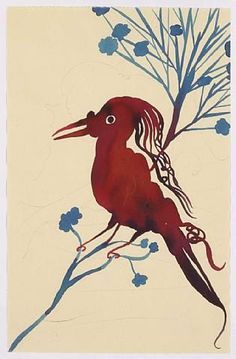
Christopher Ofili, is a British painter who is best known for his paintings incorporating elephant dung. He was Turner Prize-winner and one of the Young British Artists. Since 2005, Ofili has been living and working in Trinidad and Tobago, where he currently resides in the city of Port of Spain. He also has lived and worked in London and Brooklyn.

Laurence Stephen Lowry was an English artist. His drawings and paintings mainly depict Pendlebury, Greater Manchester as well as Salford and its vicinity.
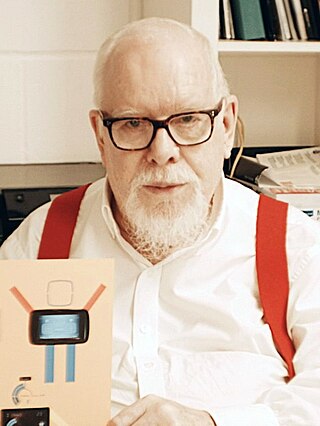
Sir Peter Thomas Blake is an English pop artist. He co-created the sleeve design for the Beatles' 1967 album Sgt. Pepper's Lonely Hearts Club Band. His other works include the covers for two of The Who's albums, the cover of the Band Aid single "Do They Know It's Christmas?", and the Live Aid concert poster. Blake also designed the 2012 Brit Award statuette.
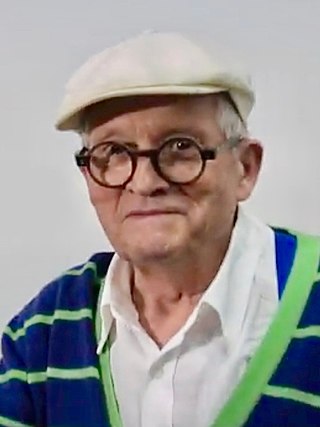
David Hockney is an English painter, draughtsman, printmaker, stage designer, and photographer. As an important contributor to the pop art movement of the 1960s, he is considered one of the most influential British artists of the 20th and 21st centuries.

John Egerton Christmas Piper CH was an English painter, printmaker and designer of stained-glass windows and both opera and theatre sets. His work often focused on the British landscape, especially churches and monuments, and included tapestry designs, book jackets, screen prints, photography, fabrics and ceramics. He was educated at Epsom College and trained at the Richmond School of Art followed by the Royal College of Art in London. He turned from abstraction early in his career, concentrating on a more naturalistic but distinctive approach, but often worked in several different styles throughout his career.

English art is the body of visual arts made in England. England has Europe's earliest and northernmost ice-age cave art. Prehistoric art in England largely corresponds with art made elsewhere in contemporary Britain, but early medieval Anglo-Saxon art saw the development of a distinctly English style, and English art continued thereafter to have a distinct character. English art made after the formation in 1707 of the Kingdom of Great Britain may be regarded in most respects simultaneously as art of the United Kingdom.
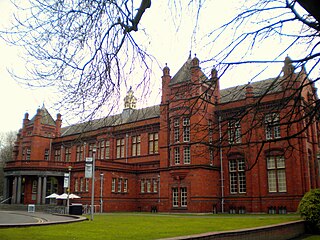
The Whitworth is an art gallery in Manchester, England, containing over 60,000 items in its collection. The gallery is located in Whitworth Park and is part of the University of Manchester.

Sir Nicholas Andrew Serota is a British art historian and curator. He has been chairman of Arts Council England since February 2017.

Face Dances is the ninth studio album by English rock band the Who. It was released in 1981 by Warner Bros. in the United States and on Polydor in the United Kingdom. It is one of two Who studio albums with drummer Kenney Jones, who joined the band after Keith Moon's death three years earlier.

Paul Nash was a British surrealist painter and war artist, as well as a photographer, writer and designer of applied art. Nash was among the most important landscape artists of the first half of the twentieth century. He played a key role in the development of Modernism in English art.
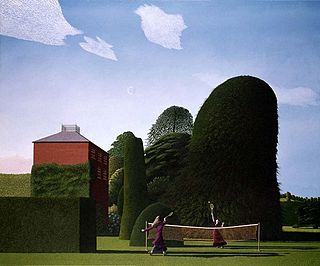
David Inshaw is a British artist who sprang to public attention in 1973 when his painting The Badminton Game was exhibited at the ICA Summer Studio exhibition in London. The painting was subsequently acquired by the Tate Gallery and is one of several paintings from the 1970s that won him critical acclaim and a wide audience. Others include The Raven, Our days were a joy and our paths through flowers, She did not turn, The Cricket Game, Presentiment and The River Bank (Ophelia).

Nat Tate: An American Artist 1928–1960 is a 1998 novel, presented as a biography, by the Scottish writer William Boyd. Nat Tate was an imaginary person, invented by Boyd and created as "an abstract expressionist who destroyed '99%' of his work and leapt to his death from the Staten Island ferry. His body was never found." At the time of the novel's launch, Boyd went some way to encourage the belief that Tate had really existed.
Graham Stuart Ovenden was an English painter, fine art photographer and writer.

Philip Jonathan Clifford Mould is an English art dealer, London gallery owner, art historian, writer and broadcaster. He has made a number of major art discoveries, including works of Thomas Gainsborough, Anthony Van Dyck and Thomas Lawrence.

David Hepher is a British artist, best known for his paintings of buildings, landscapes, especially tower blocks, including the Aylesbury Estate:
The Aylesbury Estate is... the remarkable leitmotif of [his] work as a painter… the Aylesbury is to Hepher what the Stour valley was to Constable or the Medway to Turner.



















